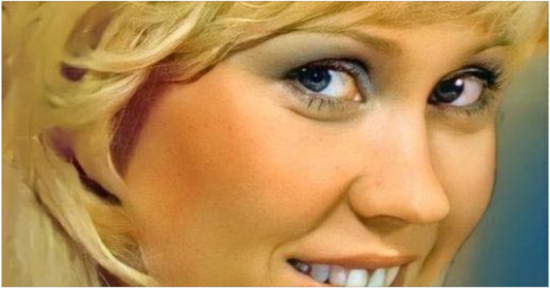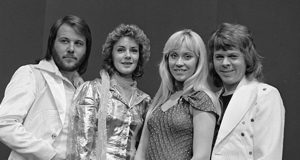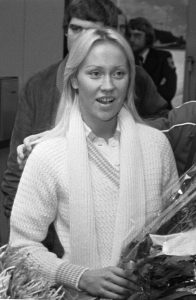
One of the most illustrious bands in history, ABBA is well known today. The Swedish quartet continues to enjoy international acclaim today. Agnetha Faltskog, a member of the group, has decided to live a life away from the spotlight.
Faltskog was one of the lead vocalists in ABBA, along with Anni-Frid Lyngstad. She performed songs that made people want to dance and others that broke their hearts thanks to her legendary pop voice. But above all, she and the rest of the band went on to become some of the most fascinating musical icons ever.
Faltskog now leads a steady life in Sweden, but that doesn’t stop her from continuing to create music. She looks amazing now.

Few people can claim they haven’t heard of ABBA. It doesn’t matter if you were present for the first performance of Waterloo or if you won’t give birth for another 30 years. Today’s 10-year-olds probably dance as wildly as anyone ever did when they hear the band’s music.
It’s nearly impossible to pick just one favorite ABBA song. The fact that there is an ABBA song for every moment of our lives, whether it be happy, sad, inspiring, or regretful, is probably why they became such global superstars.
The fact that all of ABBA’s members essentially vanished after their final album is one of the group’s more distinctive features.
So what happened to her after ABBA broke up? And how did she initially become a part of the group? This is Agnetha Faltskog’s admirable tale.

On April 5, 1950, Agnetha was born in Jönköping, Sweden. She was the first of two daughters born to Birgit Margareta Johansson and department store employee Knut Ingvar Fältskog.
Agnetha Faltskog has always had a passion for music. She had talent, and some of her favorite musicians included Tom Jones, Petula Clark, and Dusty Springfield.
A song about two little “trolls” was written by Faltskog when she was only five years old. She began taking formal piano lessons when she was eight years old and would frequently go to her neighbor’s home to practice. She performed in the local church choir as well.
With her two childhood friends, Faltskog started the band The Cambers in 1960 when she was just 13 years old. They only performed a few small shows in the neighborhood before she decided it was time for something else two years later.
Agneta became a member of the Swedish folk band Bernt Enghardt. Swedish dance music was played as the band made its way around Sweden.
“They had a singer named Agneta before me that quit,” Agnetha recalled. “They had printed posters looking for a new singer, and when they found me and after I auditioned, it was a big plus that I was named Agnetha as well.”

Faltskog was on tour with Bernt Enghardt while also working as a telephonist for a car company, but her circumstances weren’t ideal.
She arrived home after midnight, “around two or three,” and was scheduled to report to work shortly afterward. She even passed out at the car company one day, and her mother gave her a choice.
“‘Either you work as a normal person or you dedicate fully to singing’,” Agnetha recalled her mother saying. “It wasn’t a tough choice, I wanted to keep singing.”
Before departing to launch a solo career, Agnetha sang with the Bernt Enghardt band for another two years. She made the decision to change her last name to include a “h” after releasing her debut solo album.
Faltskog’s first single, Jag var s kär [I Was So In Love], was made public when he was just 17 years old. As soon as it reached No. 1 on the Swedish sales chart in 1968, a man by the name of Bjorn Ulvaeus heard it on the radio.
“I remember hearing Agnetha’s first single on the radio. There was something so special about her voice and the fact that she had written that song herself – it was magic,” Benny said in the BBC documentary Agnetha: Abba and After.
Leave a Reply